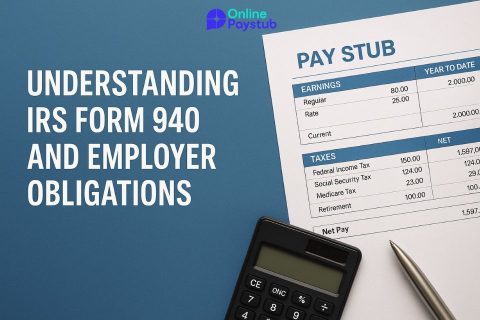Form 941-X is the official IRS document used to correct errors on a previously filed Form 941, which reports quarterly federal payroll taxes. When a business underreports or overreports employment taxes such as Social Security, Medicare, or withheld income tax Form 941-X serves as the only valid method to address these discrepancies post-filing.
Unlike the original Form 941, which is used for standard reporting, the 941-X allows employers to amend specific lines, include explanations for the adjustments, and identify the quarter in which the error occurred. This is especially relevant when retroactively claiming refundable credits, such as the Employee Retention Credit (ERC) or COVID-related sick and family leave credits.
The form is most commonly used for:
- Reporting corrections to wages, tips, or other compensation.
- Adjusting previously claimed tax credits or deposits.
- Addressing administrative errors or omitted entries.
- Claiming ERC retroactively, if initially missed.
Accurate payroll data is foundational to the amendment process. Businesses must reference employee pay records that support any wage-related corrections. For this purpose, digital tools such as Online Pay Stubs simplify access to historical payroll details. These platforms allow employers to retrieve and review prior pay stubs quickly, which can be essential for validating wage entries, calculating corrected tax liabilities, and preparing backup documentation required by the IRS.
Form 941-X is not optional when errors occur; it is a statutory requirement for amending the Employer’s Quarterly Federal Tax Return. Without its submission, the IRS considers the original Form 941 to remain accurate, even if a business later identifies discrepancies. This has direct implications on tax liability, employee benefits reporting, and audit risk.
Common Errors That Lead to Filing Form 941-X
Filing Form 941-X typically stems from discrepancies in the originally submitted Form 941. These errors are not uncommon, especially given the complexity of payroll tax reporting and recent legislative changes tied to COVID-19 tax credits. Recognizing the most frequent causes behind amendments is critical to maintaining IRS compliance and avoiding penalties.
Some of the most common errors include:
- Incorrect Wages or Tips Reported
Misreporting employee wages whether overstated or understated is a frequent issue. This may result from payroll processing mistakes, retroactive salary adjustments, or manual entry errors. - Misapplication of Employee Retention Credit (ERC)
Businesses often miscalculate or forget to claim the ERC, especially for prior quarters. Amending the return via Form 941-X allows for retroactive correction and recovery of eligible credits. - Omission or Duplication of Sick and Family Leave Credits
Under the Families First Coronavirus Response Act (FFCRA), employers could claim refundable credits. However, confusion around eligibility dates and limits has led to either missed claims or duplicate filings. - Overstated Tax Deposits or Withheld Amounts
Employers may accidentally report higher amounts than actually deposited with the IRS. This can create a mismatch between Form 941 and bank/payment records. - Incorrect Classification of Employee Compensation
Misclassifying non-taxable fringe benefits or including bonuses in the wrong period can lead to overpayment of employment taxes. - Wrong Quarter or EIN Used in Filing
Filing a return under the wrong quarter or with an incorrect Employer Identification Number (EIN) invalidates the original submission and requires correction.
Each of these mistakes requires more than just numerical adjustment. The IRS expects detailed line-by-line corrections and a clear written explanation on Part 4 of Form 941-X. Supporting documentation, such as prior pay stubs or payroll system exports, is essential for substantiating the amended figures.
Using digital payroll tools like Online Pay Stubs can help identify these errors early. Employers can cross-reference reported values with digital records and generate accurate documentation that aligns with IRS expectations.
Ultimately, identifying and correcting errors proactively rather than in response to an audit can save time, reduce compliance risk, and protect access to legitimate tax credits.
Key Differences Between Form 941 and 941-X
Although both Form 941 and Form 941-X are issued by the IRS and pertain to federal payroll tax reporting, they serve entirely different functions. Understanding these differences is essential for employers seeking to maintain accurate tax records and avoid regulatory missteps.
1. Purpose and Timing
Form 941 is a quarterly reporting form used to declare wages paid, taxes withheld, and tax credits claimed for a specific three-month period. It is filed as part of routine payroll compliance.
In contrast, Form 941-X is a corrective instrument. It is filed only when an error is identified after the original Form 941 has already been submitted to the IRS. No business can use 941-X proactively in place of Form 941.
2. Structure and Content
Form 941 provides a straightforward summary of payroll taxes due, while 941-X is structured to highlight differences between the originally reported amounts and the corrected figures. Each change must be paired with a line-by-line adjustment and accompanied by a written explanation.
3. Justification and Documentation
Unlike Form 941, which is mostly numeric reporting, Form 941-X requires justification for each correction. Employers must explain the cause of the error, cite the affected quarter, and support their revision with backup documents such as payroll summaries, tax deposit records, or digital pay stub archives.
4. Effect on Tax Liability
Form 941 results in a standard balance due or refund based on reported liabilities. However, corrections through 941-X can trigger either a refund claim or additional tax due. If an overpayment is corrected, employers may choose between a refund or credit toward a future return. If an underpayment is discovered, timely payment is required to minimize interest or penalties.
5. Processing and Review
Form 941 filings are processed routinely. Form 941-X, on the other hand, is often subject to closer IRS scrutiny due to its corrective nature. Claims for credits such as the Employee Retention Credit or COVID-related leave reimbursements via 941-X may be delayed for additional review.
How to Correct Payroll Taxes Using Form 941-X
Correcting payroll tax filings through Form 941-X requires more than identifying a numerical mistake. The IRS outlines a defined procedural structure, and any deviation such as incomplete justification or incorrect quarter referencing may result in delays or disallowed corrections. A methodical approach is essential.
1. Determine the Nature of the Error
Begin by classifying whether the error was due to a miscalculation, reporting mistake, or failure to claim eligible credits such as the Employee Retention Credit (ERC). The type of error will influence the sections of the form that need to be completed.
2. Select the Right Adjustment Process
Form 941-X offers two correction methods:
- Adjustment Process: Used when the original Form 941 overstates taxes, and the employer wants to apply the overpayment as a credit.
- Claim Process: Used when requesting a refund for overpaid taxes.
The correct box must be selected at the top of the form. Using the wrong process can delay the claim or result in rejection.
3. Complete the Correct Lines with Adjusted Figures
Identify the exact lines in the original Form 941 where the error occurred. Enter both the originally reported amount and the corrected figure. The form automatically calculates the difference, which determines the underpayment or overpayment.
4. Include a Written Explanation
The IRS requires a clear explanation in Part 4 of Form 941-X. The narrative must describe the error, how it was discovered, and what documentation supports the corrected amount.
For example:
“The original Q2 2021 Form 941 underreported qualified wages for ERC by $15,000. A payroll audit revealed the discrepancy. Supporting payroll records are attached.”
This explanation is critical in demonstrating that the correction is legitimate and backed by verifiable data.
5. Attach Supporting Documentation
Backup documents may include:
- Payroll journals
- Tax deposit summaries
- Internal audits
- Archived pay stubs (retrievable via tools like Online Pay Stubs)
Documentation strengthens your claim and expedites IRS review.
6. Submit Form 941-X and Monitor Its Status
Mail the form to the IRS address applicable to your business location and filing type. Electronic filing is not yet available for Form 941-X; it must be submitted by mail.
After submission, monitor the correction status. The IRS may take several months to process amended returns, particularly when refunds or ERC claims are involved.




No comments to show.